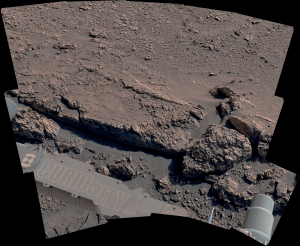Cassini Significant Event Report
For Week Ending 07/19/02
The most recent spacecraft telemetry was acquired from the Goldstone tracking station on Tuesday, July 17. The Cassini spacecraft is in an excellent state of health and is operating normally. Information on the spacecraft's position and speed can be viewed on the "Present Position" web page.
Instrument activities this week included Composite InfraRed Spectrometer Instrument and Cassini Plasma Spectrometer (CAPS) calibrations, development of Radio and Plasma Wave Science (RPWS) Instrument Tour Observation Modes, and calibration of the RPWS High Frequency Receiver. The Visual and Infrared Mapping Spectrometer performed a star characterization, scattered light observation, instrument solar port observation, and executed an instrument spectral calibration. The Ultraviolet Imaging Spectrograph (UVIS) performed instrument solar port and SPICA observations.
In addition, spacecraft activities included a Reaction Wheel momentum unload, clearing of the AACS high water marks, and uplink and execution of an ACS Gyro Calibration mini-sequence.
The purpose of the mini-sequence was to determine the misalignments, scale factors, and scale factor uncertainties for the Inertial Reference Unit (IRU). The misalignments and scale factors map directly into accurate attitude estimation. The uncertainties, which are currently quite large, directly affect how long we can suspend stellar ID before we accumulate large attitude errors. The activity consisted of a series of turns using the reaction wheels. By using the scalable feature of the parameter estimation portion of the Cassini Attitude Control Flight Software, the spacecraft was able to autonomously compute the necessary information. All computed values were significantly below tolerances and indicate excellent performance of the IRUs. This was a first time activity for the Cassini
spacecraft and in fact, a first time activity for any JPL mission.
The Integrated Test Laboratory completed exercising a procedure to normalize RPWS and UVIS flight software. This activity will be performed on-board the spacecraft in late July.
The Cassini/Huygens program held a joint independent review of the Huygens Probe Mission. Participants from JPL, the European Space Agency, and private industry supported the two-day review. Included on the agenda were mission design, navigation strategy, critical sequence design, and ground and flight operations scenarios. Instrument Operations has collected all presentations from the on-going Science and Uplink Office Seminar series and additional pertinent Cassini training materials for reproduction on a MAC/PC compatible CD-ROM. The CD makes these materials readily available for on-going training.
The second of three input ports for Science Operations Plan implementation of tour sequences S09 and S10 was reached this week. The merged product was handed off to ACS for end-to-end pointing profile validation. The final input port also closed this week for the Science Planning Team development of the C34 sequence. This merged product was also delivered to ACS for end-to-end pointing profile validation.
Uplink Operations presented requirements for Target Options and Modules scheduled for Mission Sequence Subsystem D9.0 at this week's Cassini Design Team meeting.
Outreach gave a series of presentations on the Cassini mission, and presented educator activities to 30 classroom educators participating in a 2-week NASA Educator Workshop (NEW).
Additional information about Cassini-Huygens is online at http://saturn.jpl.nasa.gov.
Cassini will begin orbiting Saturn on July 1, 2004, and release its piggybacked Huygens probe about six months later for descent through the thick atmosphere of the moon Titan. Cassini-Huygens is a cooperative mission of NASA, the European Space Agency and the Italian Space Agency. JPL, a division of the California Institute of Technology in Pasadena, manages the mission for NASA's Office of Space Science, Washington, D.C.
Media Relations Office
Jet Propulsion Laboratory
California Institute of
Technology
National Aeronautics and Space
Administration
Pasadena, Calif. 91109.
Telephone (818) 354-5011






























